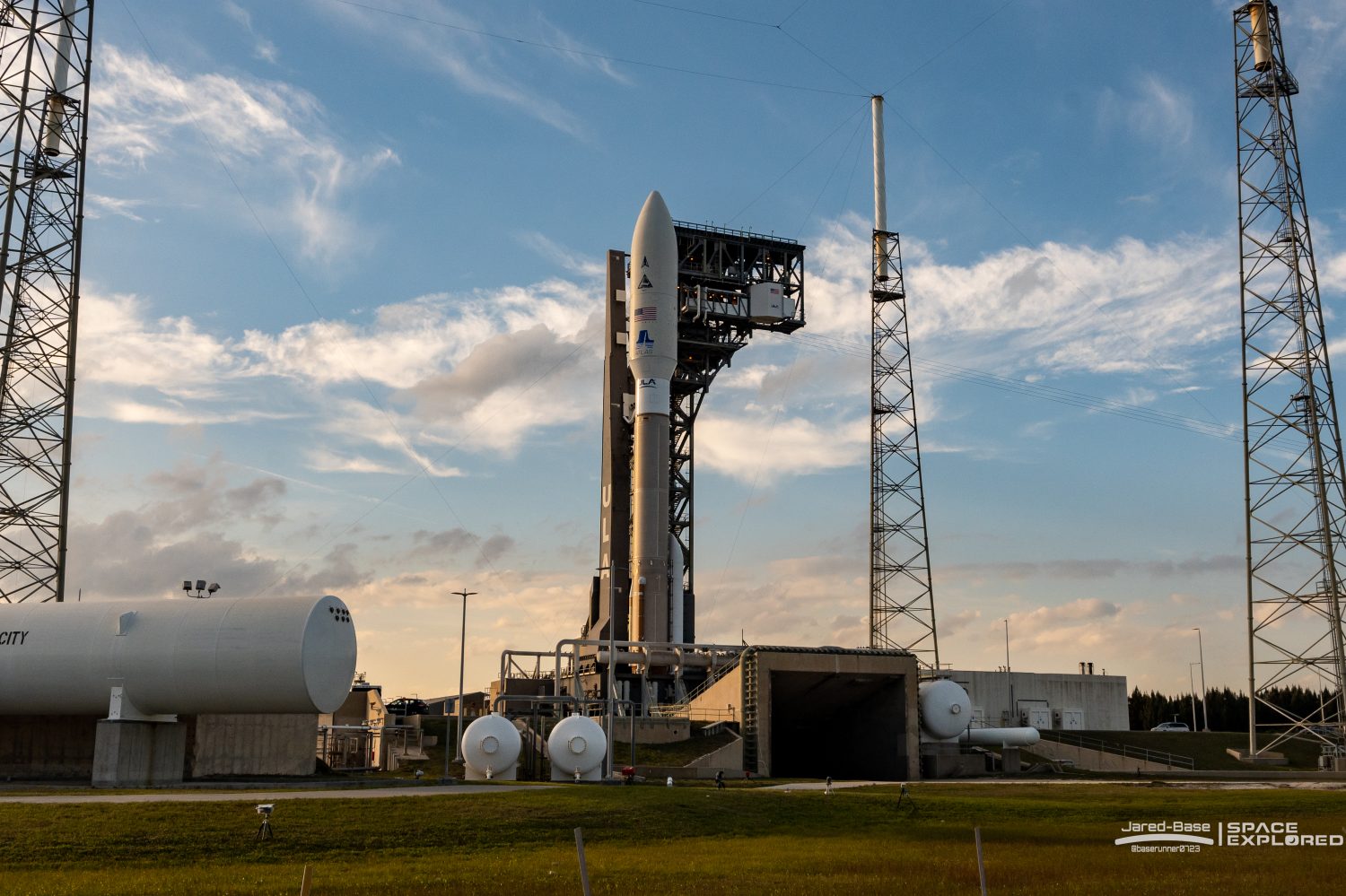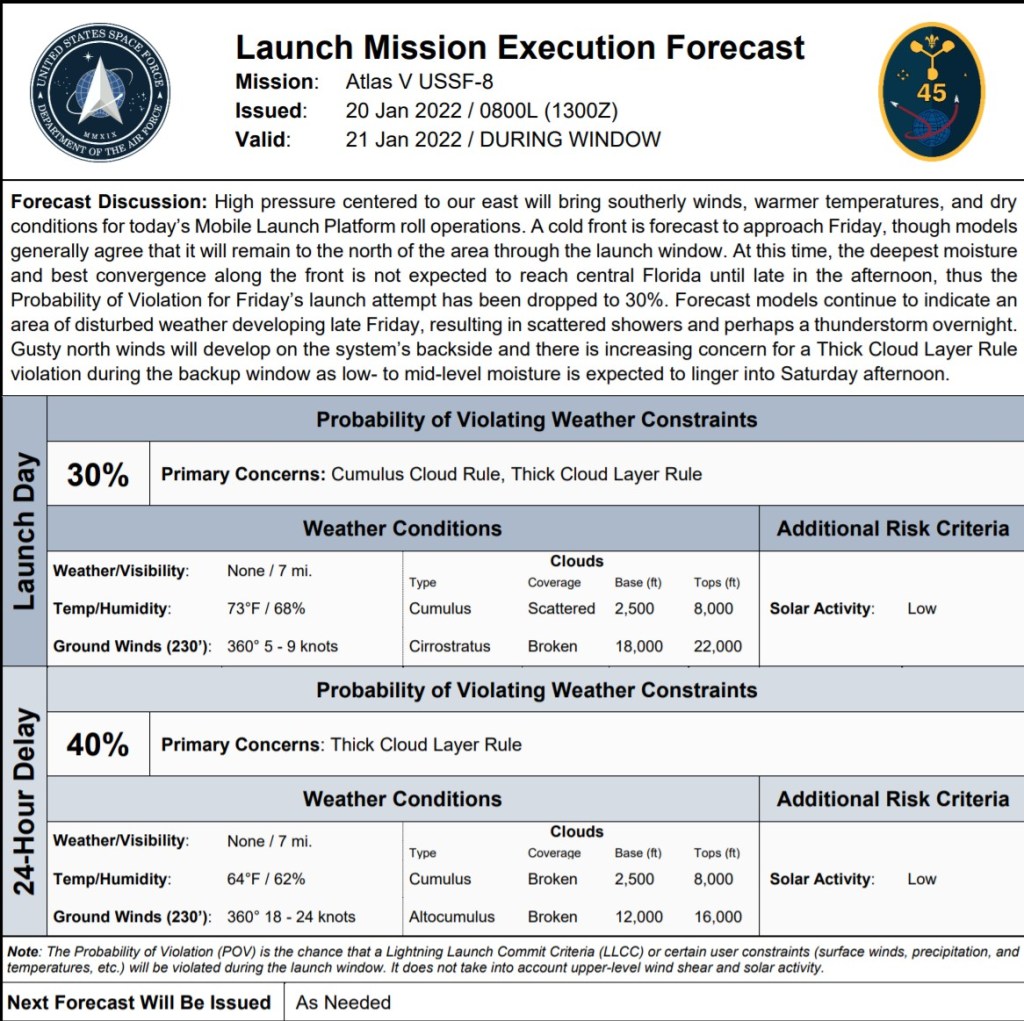
Friday afternoon United Launch Alliance is preparing to launch two satellites directly to geosynchronous orbit for the U.S. Space Force. The USSF-8 mission will be the only Atlas V to fly the 511 configuration and is ULA’s first flight of 2022.
Launch Date: Friday, January 21, 2:00 p.m. EST
Rocket: ULA’s Atlas V (511)
Payload: Two Geosynchronous Space Situational Awareness Program (GSSAP) satellites
Launch Pad: SLC-41, Cape Canaveral Space Force Station, Florida
Destination: Geosynchronous Orbit
Landing Site: The Atlas V rocket is not reusable and will be expended into the Atlantic Ocean.
About ULA’s Atlas V rocket
The Atlas rocket has been a workhorse for the United States military and NASA. The Atlas V family tree goes back to the late 1950s as one of the US military’s first ICBMs. However, the military quickly determined liquid-fueled rockets were better suited in the satellite business, and the Atlas launcher was born. NASA and the Department of Defense used the Atlas for Project Mercury, Gemini, and some of the most critical scientific and national security missions throughout its history.
What is an Atlas V 511?
The modern version of the Atlas is a two-stage design with up to five solid rocket boosters on the side. It is optimized for national security launches but has several commercial contracts with Boeing and Amazon. This rocket variant is a 511, the first and currently only time this configuration will be flown. The first digit indicates this mission will utilize a five-meter fairing, encapsulating the Centaur upper stage and the payloads. The second digit indicates the number of Solid Rocket Boosters (SRBs) strapped to the Atlas booster. The third digit indicates how many RL-10 engines are on the Centaur. This is almost always one. However, the Boeing Starliner requires two.
Weather
The latest weather forecast from Space Launch Delta 45 shows a 70% chance for acceptable launch conditions, with the primary concern being cumulus and thick clouds. Should there be a 24-hour delay, the forecast shows a 60% chance for acceptable weather with the primary concerns being thick clouds. (Updated: Jan. 20, 9:20 p.m. EST)

Where to watch?
You can find coverage of Friday’s Atlas V launch on ULA’s YouTube channel. The live stream will usually go live about 30 minutes before liftoff and will offer the best views of the launch.
Featured Image Credit: United Launch Alliance
Enjoy reading Space Explored?
Help others find us by following on Apple News and Google News. Be sure to check us out on YouTube, Twitter, Facebook, and Instagram, join our Discord!
FTC: We use income earning auto affiliate links. More.



Comments